Humphrey de la Croix
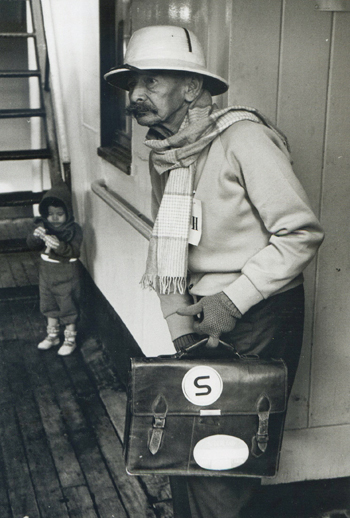
The Netherlands 1960. Two newly arrived Indische repatriates are leaving the ship.
Photo: Leonard Freed (Magnum)
In my article ‘Eurasians (Indo-Europeans) of the Netherlands Indies: People in Diaspora? (1)’, I tried to analyse the nature of the Indo-Europeans’ exodus from Indonesia and their migration to the Netherlands, the United States and a few other countries. My tentative conclusion is that Indos’ migration does not meet all the characteristics of a diaspora.
This second article elaborates some special features of Indo community outside Indonesia as the awareness of being a particular ethnic group and the emergence of an Indo imagined community. The article will end up with the Van Halen showcase as an example of successful immigrants in the United States.
Indos after the Netherlands Indies: the cold “welcome” home
For many Indos the dramatic and traumatic experiences during the Japanese occupation (internment, humiliation, starvation, death and broken families), Bersiap period and the unvoluntary departure from their motherland are lasting common issues. In addition to these experiences are to mention the never paid salaries of civil servants and military during the war period and the Dutch government’s policy of trying to prevent Indos moving to the Netherlands. Once Dutch goverment was convinced the massive repatriation of these Dutch nationals from the former colony to the Netherlands had become inevitable, Indos were confronted with a cold reception in the country they always considered their moral and cultural point of reference.
In the eyes of the Indo community Dutch government perseveres in neglecting these cries for justice. Historically it’s a typical official Dutch reaction to solve problems by laying emphasis on the legally correct way the government had handled the issue of backpay and restoration of property rights. At the other side the Dutch legal orientation easily ignored the human dimension. How to deal with post traumatic stress syndrom, feelings of discrimination and being treated as a second class citizen? The answers to these questions came late, often too late. Metaphorically Indos’ discontent with the cold, non-empathetic way of the Dutch immigration policy is condensed in the so-called ‘meubelvoorschot’: an advanced payment of a loan granted in order to buy clothes and furniture. Forced to leave behind their belongings in the hostile Indonesian circumstances many Indos arrived only with a suitcase, some small personal belongings and not rarely almost impoverished. Then in Holland they were “welcomed” with a debt they would have to pay back during ten years or longer. I remember my parents’s last payment was in 1970, 12 years after receiving the loan.
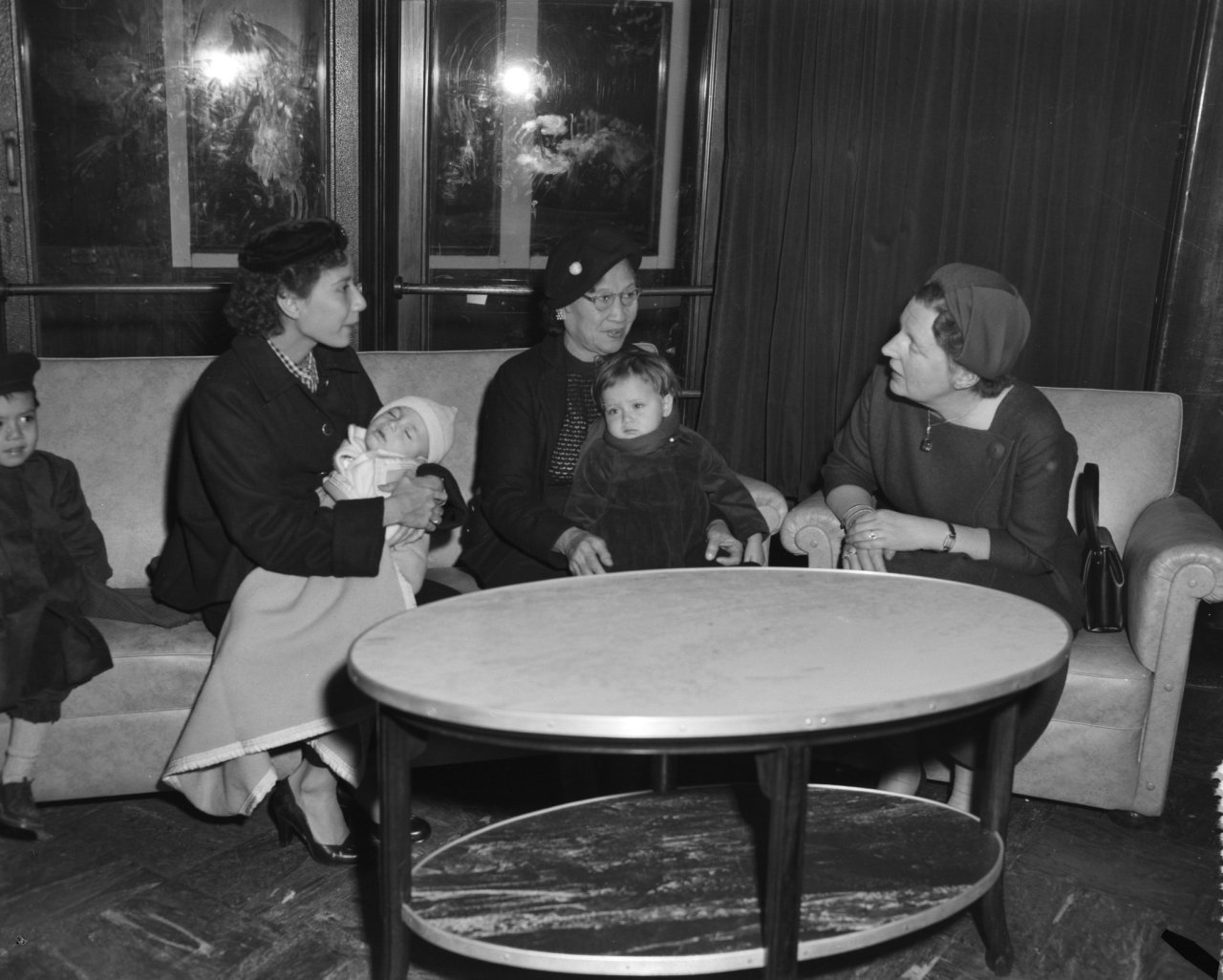
Rotterdam January 19, 1958. Queen Juliana with some Indische repatriates just after their arrival with the ship ‘Sibajak’. Most Indo repatriates would not enjoy a royal reception like this one.
Photo:Collection Anefo, made by Herbert Behrens
Dutch ignorance, indifference and scepticism
Many Indos will tell similar stories about the initial months or years as newly arrived compatriotes in the Netherlands. The housing in big complexes as barracks and even former concentration camps of the Germans used for deportation of Jews, the boarding-houses sharing one room with all the family, the bad, tasteless and dull food, the Dutch people’s ignorance of colonial history and Indo culture and last but not least the indifference towards Indos’ war experiences became almost a new trauma.
The Dutch were preoccupied with the reconstruction of the devastated country and hard trying to forget the humiliating en degrading war period and focused on finding jobs, a house and in general a restored prewar prosperity. In that climate Indos not rarely met indifference, hostility and envy when an Indo family was offered a house, a job or more coupons for food or clothes.
Fortunately thanks to an astonishing economic growth in the fifties and an until then unseen increase of prosperity the Dutch embraced the former repatriates as new neighbours, sons and daughters in law or colleagues. Assimilation accomplished! Indos successfully have become Dutch.
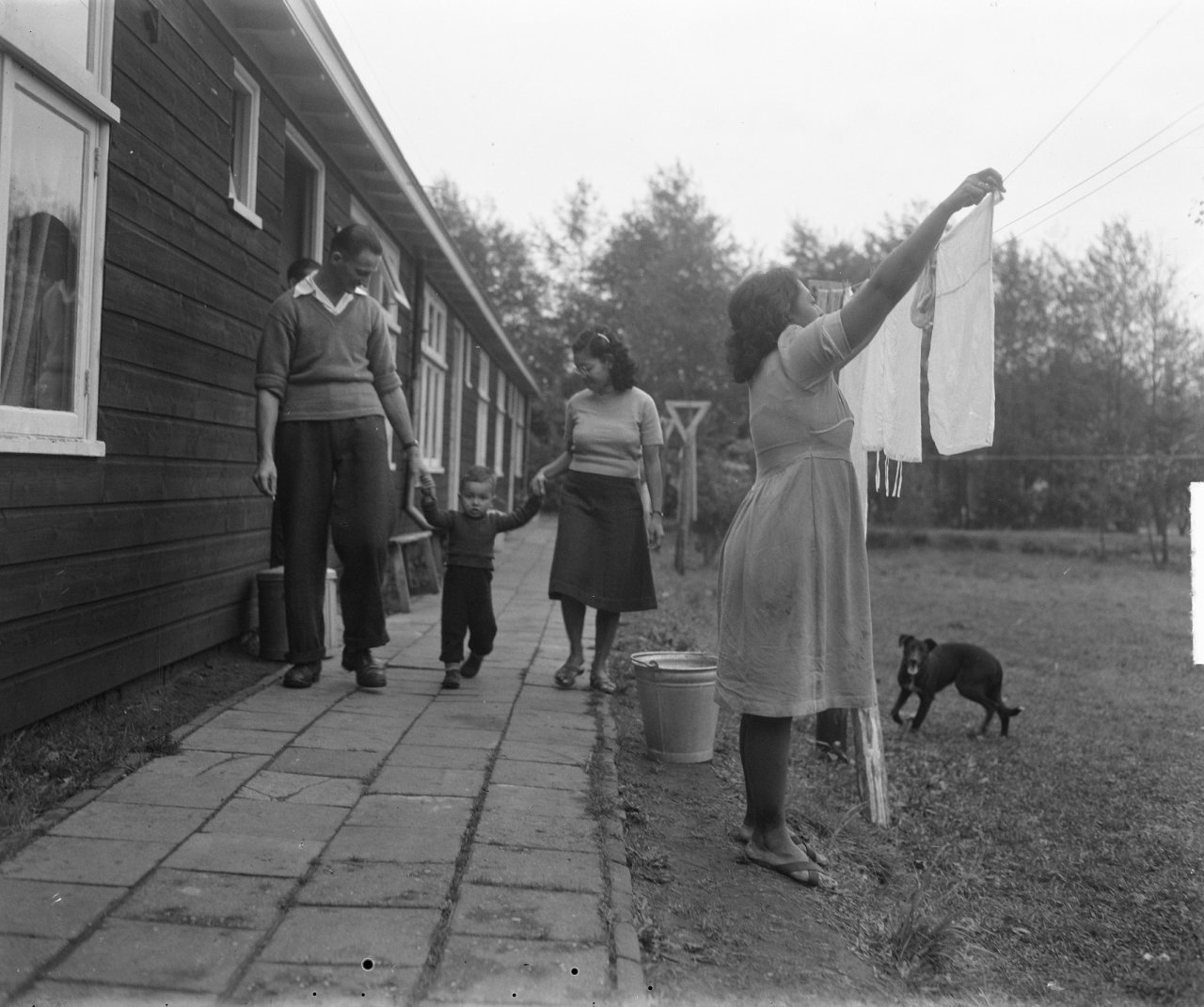
Westerbork, October 19, 1950. The former German concentration camp ‘Westerbork’ was given the new name Schattenberg and became a complex to house repatriates from Indonesia while waiting a house of their own being offered. Staying in the camp took some months, rarely a year or longer
Photo: Collection Anefo, made by NN Winterbergen
Assimilation and the loss of Indo identity
The first generation Indo immigrants had experienced personally the atrocities of the Japanese occupation and decolonization period. Unlike the present-day reality of immediate sharing of emotions in social and other media, Indos kept silent during decades. The pain of the humiliating experiences was too intense to talk about. Rather focusing on the opportunities of a life in peace than sharing the suffering of the past.
But the perspective of ending up as an ethno-cultural group in oblivion, encouraged older Indos to forward their history and cultural heritage to the next generations. Being silent, not talking about the past was strengthened by the receiving Dutch society. The focus on the German occupation and bagatalizing the impact of the war in the colony made the Indos reluctant to share their feelings and stories.
Indos’ reaction was a combination of assimilation at the ‘outside’ as an employee, a student or pupil and a citizen in public. At the same time there was also another, ‘inside’ Indo world where you meet other Indos to share stories from the Indies and an Indo lifestyle: more relaxed, colourful and of course with their own good Indo food.
The children of the first generation Indo immigrants predominantly assimilated as their parents wanted them to be better Dutchmen than the Dutch themselves. This old Indo reflex from the colonial period is based on Indos’ actual second rated social position in that society. It is true Indos had the same rights and opportunities but in reality white Europeans (’totoks’) found themselves on a higher level in the upper layers of the social “pyramid”. In this system social upheaval of Indos was bothered by discrimination and prejudices or in contemporary words: a glass ceiling prevented Indos to reach the highest social ranks. So, Indos were requiered to show the utmost of their merits. This mental conditioning continued after settling in the Netherlands. It also made Indos the first successful group of immigrants in Dutch postwar history.
In the Netherlands: social descent instead of upheaval
The road to that success was not smoothly paved. In the Netherland Indos painfully experienced their school certificates and diplomas did not have the same value and as a result they could not apply for jobs they had in the Indies before. An inspector of police had to step back by accepting the lower rank of a policeman. Others had to accept a job as janitor or a cleaner in a school instead of a white collar job.
The promised homeland proved to be a society ignoring Indos’ status as Dutch as the other residents. This resulted in a feeling of humiliation, discrimination and at least incomprehension. Knowing returing to Indonesia was impossible Indos accepted their situation as their fate and the only way to deal with it was assimilation and self-denial.
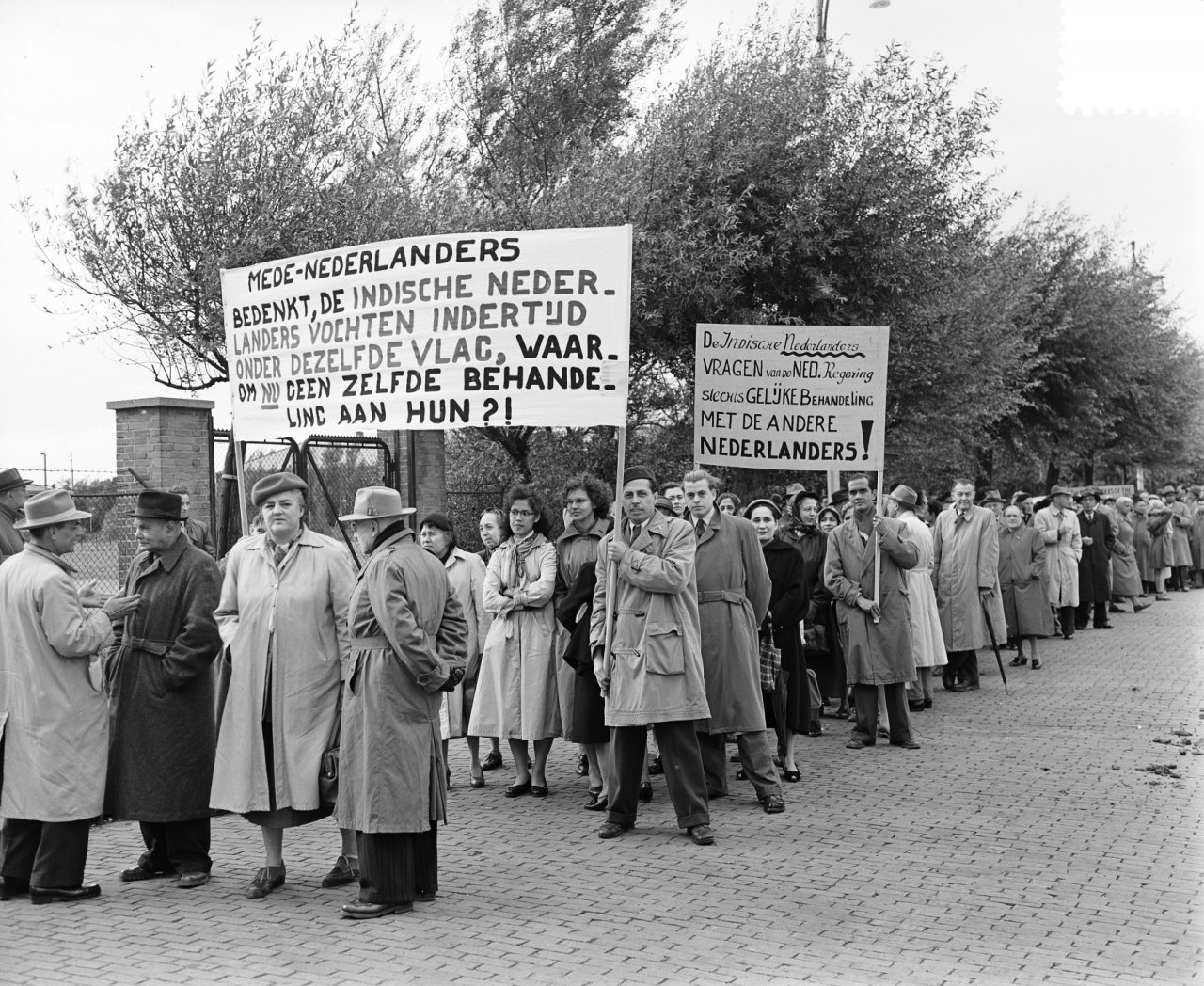
September, 25 1954 The Hague: Indos and sympathizers reminding their government they are Dutch too, fought for the country and are now requiering to be threated equally as all the other Dutch
Photo: Rossem, Wim van / Anefo
The “silenced voices” of the first generation and the lack of knowledge of second generation Indos meant a fading away of essential Indo cultural elements as the use of Malayan language, making kroncong music, knowledge of an authentic Indo cuisine, skills like massaging and typical Indo features as belief in supernatural phenomena.
In the eighties of last century Dutch Indos of the second generation wondered why their parents kept silent about their life in former Netherlands Indies. A real (first) Indo ‘revival’ started and young writers like Marion Bloem or musicians as Ernst Jansz added Indo elements in their books and songs. When a third generation Indos emerged in the nineties these adolescents and adults found themselves amidst a lot of other ethnic groups with distinctive (sub)cultural features and often the same common feature of a darker skin. Searching the social, cultural and ethnic roots, is a way of understand your personality and social position.
It is a rather ironic or even tragic notion that Dutch assimilation policy prohibited Indos to preserve their culture. From the seventies and eighties new immigrant groups from Morocco and Turkey were able to live without loss of their culture. In the emergence of nowadays Dutch multicultural society Indos officially have been invisible.
The second generation Indos believes their parents did not give access to their Indo roots and past. As an effect third and fourth (the youngest Indos) generations are searching where their grandparents came from. They have to find out as Dutch, American, Canadian or Australian Indos, if and why their mixed ethnic origine make them inevitable Indos, and what does it mean? Where deceased grandparents and ignorant parents are not able to forward stories of the Indo roots, the internet has become a valuable source of information. Family trees, weblogs and historical websites reveal and unlock a silenced Indo past. Many younger Indos do have the same questions and they meet in chatrooms or other social media. A real ‘Indo revival’ has started.
Its this trend the American Indo Project is refering to in order to preserve the Indo cultural inheritance. Hopefully the threatening loss of an Indo identity will be reversed and directed into constituting new, energized Indo identities.
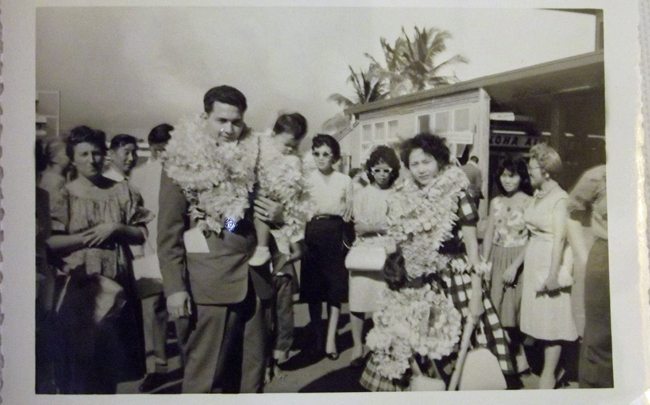
Rob and Sophie de Bos arriving in Hawaï August 12th 1961. Their belongings: some food and a fistful of dollars.
Photo: collection Rob and Sophie de Bos
Indos after the Indies: an imagined community in search of a new identity
After their exile from Indonesia Indos had to deal with a vanishing identity that before emerged from it’s natural and cultural habitat the Netherlands Indies. Due to the official policy of social and cultural assimilation Indo’s authentic identity to a large extent abraded indeed. But thanks to an indoors continued Indo lifestyle Indo identity could revitalize en regenerate. Admittedly the second and third (now also a fourth) generations differ a lot from their parents and grandparents but manage to be recognized as Indos. Even younger Indos are proud te be Indo and striving to be special among all these new people bringing other (exotic?) cultures.
More than ever the Indos in diaspora are an imagined community. Going back to the lost country Netherlands Indies is an impossibility but instead Indos created a new identity based on memories, shared values and experiences as a substitute of the homeland lost. In a certain way the desire to go back to the (it’s true: imagined) Indies. Thanks to e-mail, the internet and social media like Facebook Indos are a step closer to one postcolonial Indo community.
Indos’ social and ethnic awareness
Asking Indos to mention typical Indo characteristics not rarely stereotypical answers are popping up. They call Indos not rude (‘kasar’), caring and especially for the elder people, modest or even humble, loyal, hospitable. Defining ’the’ Indo is not easy and most Indos will tell you ‘it is a feeling’. Sociologists or historians will not be satisfied with this undistinguished indication but on the other hand is it possible to classify Indos just based on subjective notions also applicable for so many other social groups?
Maybe the way out of this problem is the concept of multiple identities. The Indo is Dutch and Asian, belongs to a social-economic (lower, middle or top) and a cultural class. Of course and not often mentioned is skin colour as a specific feature. Or at least was: in every new generation Indos will be fading and be less recognizable as their ‘archetypical’ ancestors. I admit the skin colour was and is not an easy item to talk about but ignoring would violate reality. It is Indos good right to be correct by not paying special attention to skin colour but they will have to deal with others who do. Let me give an example: in the Netherlands increasingly Dutch and many others do not recognize Indos as a group connected directly to the national colonial history. A lot of Indos feel unhappy being assimilated with all those residents having non Caucasian
characteristics in common. Apart from the presence of so many new immigrant groups it is still a truth the Dutch never learnt about Indos’ history. After all these years of ignorance we have to fear because of the ‘rivalry’ of the other ‘strangers’, a profound knowledge about Indos’ history and backgrounds will ever be transfered.
In general and in every generation Indos consider themselves as Dutch (or Indische Americans/Canadians/Australians). Indo identity is almost the same as Dutch identity. At the same time Indos among each other always talked about what distinguished them from the belanda. I am convinced the Indo community is a vital one and able to preserve it’s unique and authentic identity or better: identities.
The Van Halen showcase: a successful emigration to the United States
An example of Indos in diaspora is the Van Halen family. Jan van Halen was an Amsterdam born professional musician who moved to Indonesia just after World War II. Looking for new opportunities he faced the increasing anti-Dutch atmosphere in the young, new nation. Fortune did not let him down when he met his later wife Eugenia van Beers, an Indo woman born in the West-Java Lebak region.
March 4, 1953 the newly weds repatriated to the Netherlands as staying in Indonesia did not offer secure career perspectives. Their first child Alexander Arthur (Alex) was born May 8, 1953 and followed by Edward Lodewijk (Eddie) January 26, 1955. Father Jan earned his living as a free lance musician and was much appreciated in the Dutch jazz scene. In 1960 the Netherlands Royal Airforce (‘Koninklijke Luchtmach’) offered him a job in it’s official band. As he had to find a stable income to support his wife and two young sons he accepted this opportunity. It meant the end of a free existence as a wandering musician.
Despite or maby because of the stable and steady financial situation the adventurous, restless Jan van Halen and his wife decided to emigrate to sunny and warm California. The enthusiastic and tempting stories of family and friends emigrated to California made the poky, narrow minded Netherlands with it’s cold, grey and wet climate, a place to leave in 1962.
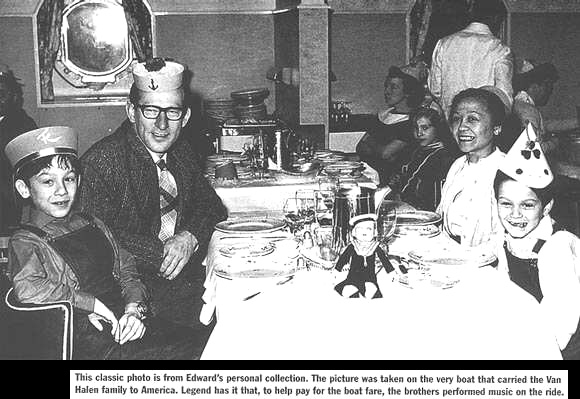
Only with a fistful of dollars (thirty is said) the family headed for California and settled in the Pasadena region. As so many immigrants there were not immediately nice jobs available or a house waiting. But the willingness to do every job, live moderately and the conviction of working steadily towards welfare and prosperity made the Van Halen family one of the so many successful immigrants in the United States.
Indo boys Alex and Eddie van Halen are the archetypical symbols of immigrants in a new homeland. Their parents and the opportunities offered by the receiving and open minded American society, enabled them to be the undisputed today’s succesful artists and icons of American hardrock music.
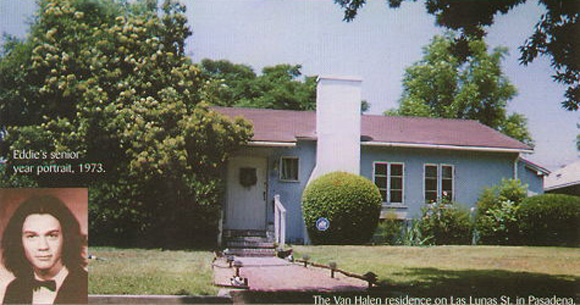
1973. Pasadena: the house where Eddie en Alex van Halen spent their childhood
Recent news: Eddie van Halen honoured by the Smithsonian Institute (April 2015)
February 12, 2015 Eddie Van Halen spoke at Washington, D.C.’s Smithsonian National Museum of American History and Zocalo Public Square as part of the institution’s “What It Means to Be American” series. The sold-out event was hosted by journalist Denise Quan.
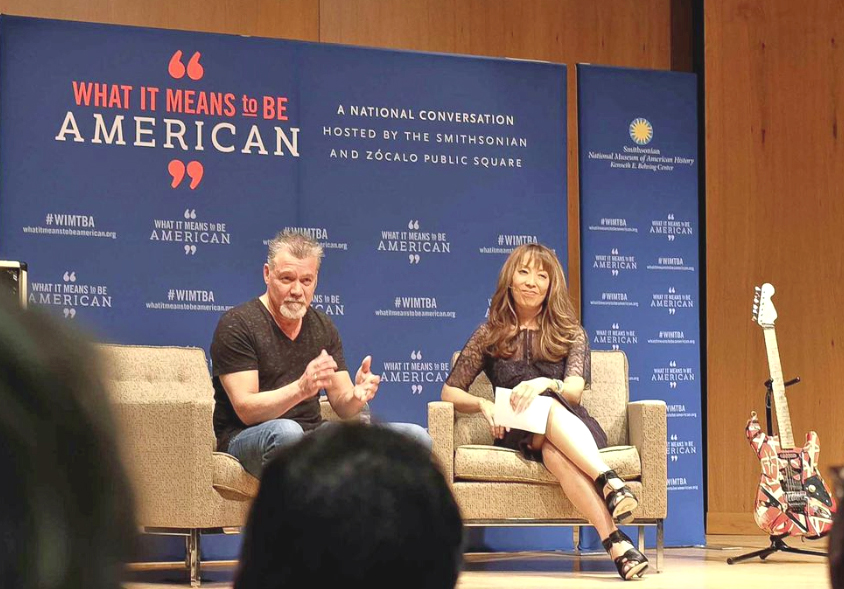
February 12, 2015. Eddie Van Halen spoke at Washington, D.C.’s Smithsonian National Museum of American History and Zocalo Public Square as part of the institution’s “What It Means to Be American” series.
He also told about his family’s history as immigrants from the Netherlands and with an Indische background
Photo: http://www.guitarworld.com/eddie-van-halen-plays-guitar-innovation-smithsonian-video
Epilogue
I still believe Indos’ exodus is not a diaspora or at least a non-complete one. Most Indos consider the place they have settled as their (new) natural habitat where they are successful and feel home. In the Netherlands the official policy of mandated assimilation prevented the emergence of a multicultural situation but the Indo identity preserved in an Indo inner world. Indos after the Indies are also to be considered as in imagined community and culture. Without the tropical circumstances and interactions with other Asian peoples so close in the neigbourhood, the Indo identity and culture of tempo doeloe (the old days) is a definite past. A new land and new generations forced Indos to redefine themselves. The combination of the assimilated people at the outside and preserving Indo culture in an inside world, fits so well in the multi-identities schedule.
The emigration story of the Van Halen family is the story of many other Indos leaving the Netherlands behind and finding opportunities in another land. It is also the story of breaking the shackles of Dutch coldness, lack of empathy and narrow mindedness.
The Van Halen family had no choice leaving a hostile Indonesia. They prefered staying in the tropical climate, but securing their own future in the Netherlands was more urgent. The reasons the family soon left the Netherlands are recognizable for other Indo families “transfering” to better countries like the United States, Canada, Brazil, Australia or Spain.
As new immigrants the majority would be successful and well integrated in the new fatherlands. Indos also continued to exist as communities with an authentic identity. The Indo subculture of gatherings with their favourite keroncong, Hawaiian or country music, and of course the legendary Indo food nowadays is a vital phenomenon.
Read the first part: ‘Eurasians (Indo-Europeans) of the Netherlands Indies: People in Diaspora? (1)
Further reading
http://www.slideshare.net/syedmubashirmosavi/diaspora-as-post
http://en.wikipedia.org/wiki/Eurasian_(mixed_ancestry)
http://en.wikipedia.org/wiki/Indo_people
http://www.theindoproject.org/tag/immigration

Historiche werkelijkheid 1942:
WEES NIET BANG! KOM MAAR OP!WIJ ZIJN GEREED!
De Jap. met hun spleetogen kunnen niet eenst rechtschieten!
Wij zullen hun een warme welkom bezorgen met onze 70.000 roemrijk KNIL soldaten gewapend met VOC klewangs en 1885 HUMBURG karabijen!